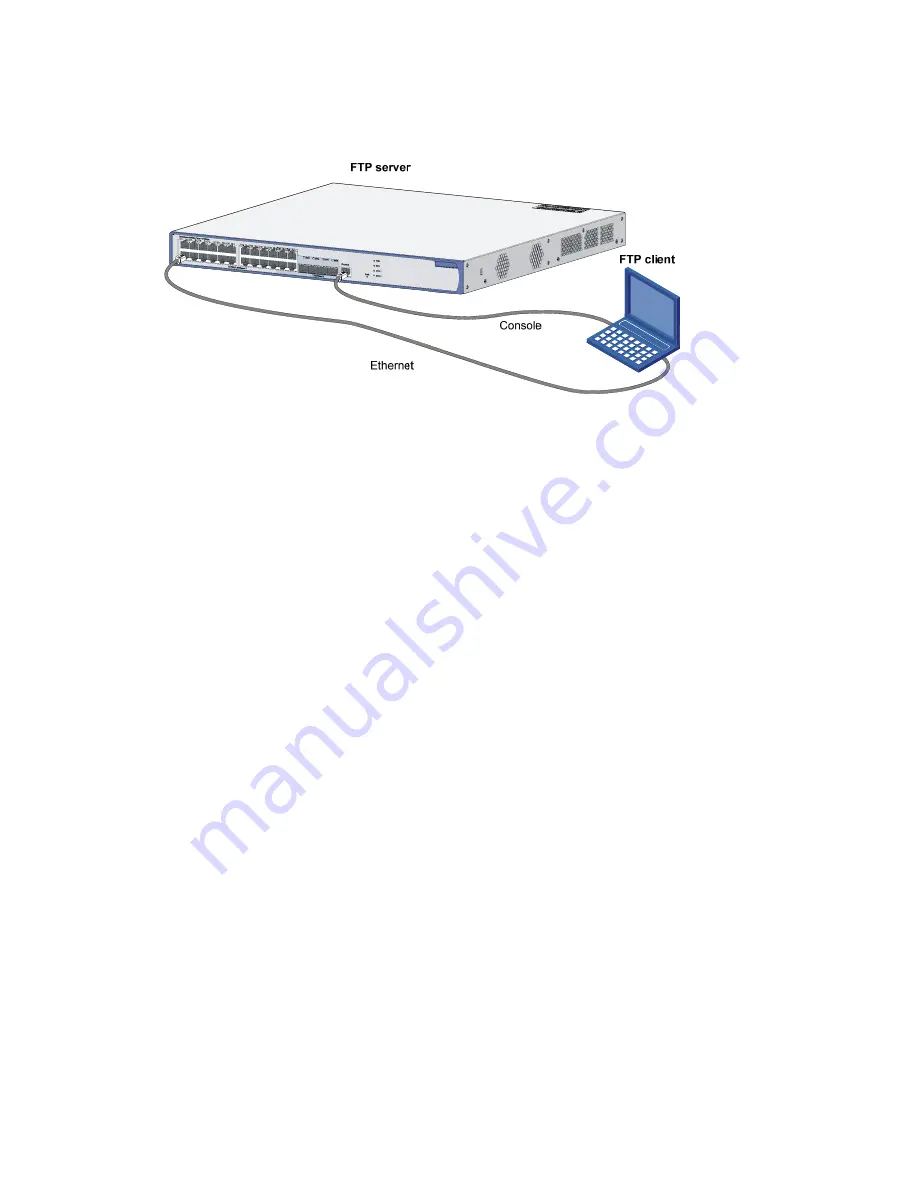
5-20
With the device as an FTP server and the PC acting as an FTP client
1) Set up an update environment
Figure 5-9
Set up an environment, with the device as an FTP server
z
For operations on the access control engine, the data needs to be transferred from the switching
engine to the access control engine; therefore, you need to configure the IP addresses of the
switching engine, access control engine and the PC to be in the same network segment. For
example, configure the IP address of the FTP client as 192.168.0.1, that of the access control
engine of the device as 192.168.0.2, and that of the switching engine as 192.168.0.3 (to configure
the IP address of the switching engine, you need to change to CLI of the switching engine by using
the
oap
command). Verify the connection by using the
ping
command.
z
For operations on the switching engine, you need to log in to the switching engine using the
oap
command, configure the IP addresses as mentioned above, and verify the connection by using the
ping
command.
2) Enable the FTP server
The FTP server feature supports concurrent access of multiple clients. Upon receiving a request from
an FTP client, the FTP server performs the requested operation and returns the result. Use the following
command to enable FTP server:
[System]ftp server enable
% Start FTP server
Add an authorized FTP username and password:
[System]local-user guest // Create user account
guest
[System-luser- guest]service-type ftp // Set the user type to
FTP
[System-luser- guest]password simple 123456 // Set the password to
123456
3) Maintain
the
device
After enabling FTP server and setting the username and password on the device, start the FTP client
application on the PC. This example assumes that you use Microsoft FTP Client provided in Windows
XP.
Open a DOS prompt window, and enter
ftp
at the DOS prompt.
C:\Documents and Settings\Administrator>ftp
ftp> // The system prompt changed to
ftp>
ftp> open 192.168.0.2 // Connect to the device
Connected to 192.168.0.2.






























